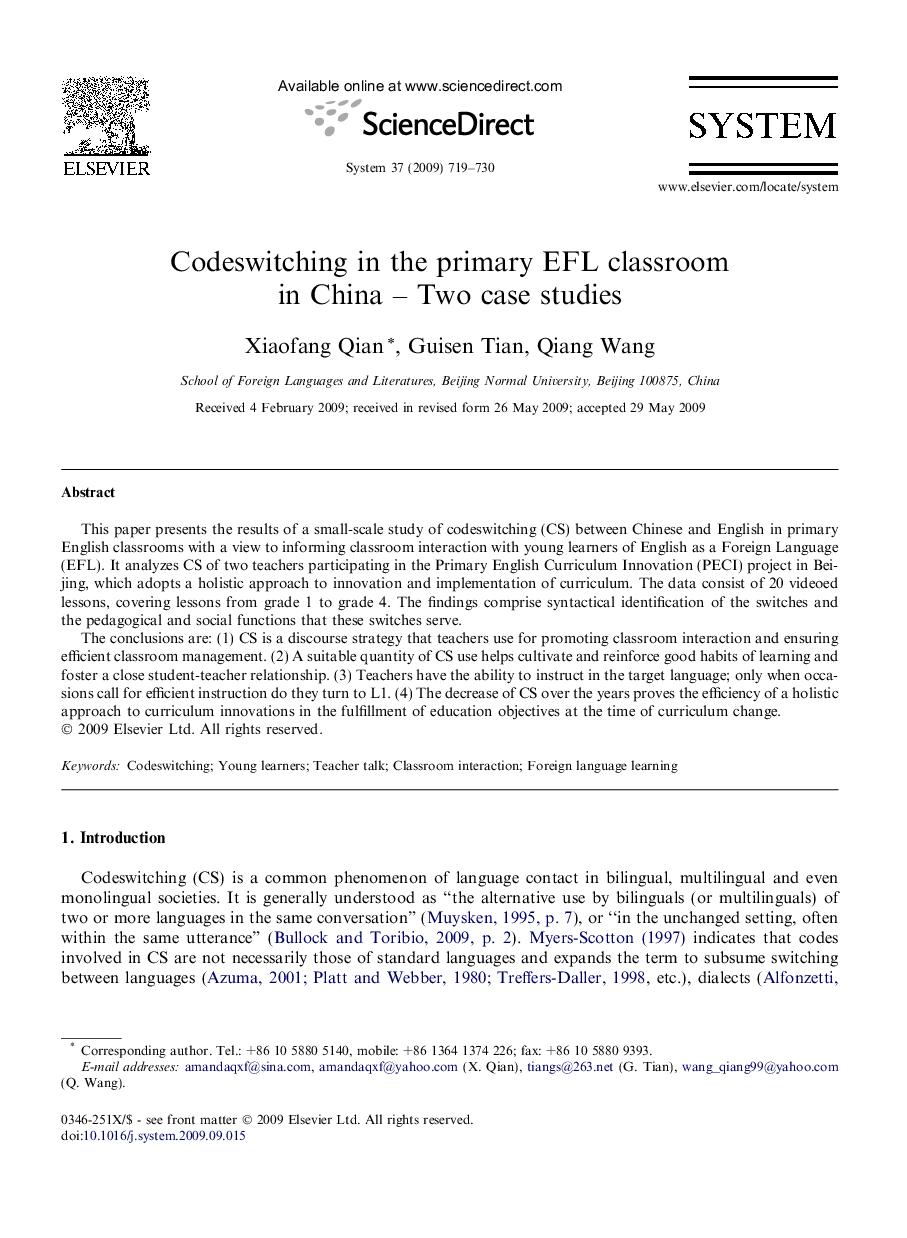| Article ID | Journal | Published Year | Pages | File Type |
|---|---|---|---|---|
| 373689 | System | 2009 | 12 Pages |
This paper presents the results of a small-scale study of codeswitching (CS) between Chinese and English in primary English classrooms with a view to informing classroom interaction with young learners of English as a Foreign Language (EFL). It analyzes CS of two teachers participating in the Primary English Curriculum Innovation (PECI) project in Beijing, which adopts a holistic approach to innovation and implementation of curriculum. The data consist of 20 videoed lessons, covering lessons from grade 1 to grade 4. The findings comprise syntactical identification of the switches and the pedagogical and social functions that these switches serve.The conclusions are: (1) CS is a discourse strategy that teachers use for promoting classroom interaction and ensuring efficient classroom management. (2) A suitable quantity of CS use helps cultivate and reinforce good habits of learning and foster a close student-teacher relationship. (3) Teachers have the ability to instruct in the target language; only when occasions call for efficient instruction do they turn to L1. (4) The decrease of CS over the years proves the efficiency of a holistic approach to curriculum innovations in the fulfillment of education objectives at the time of curriculum change.
